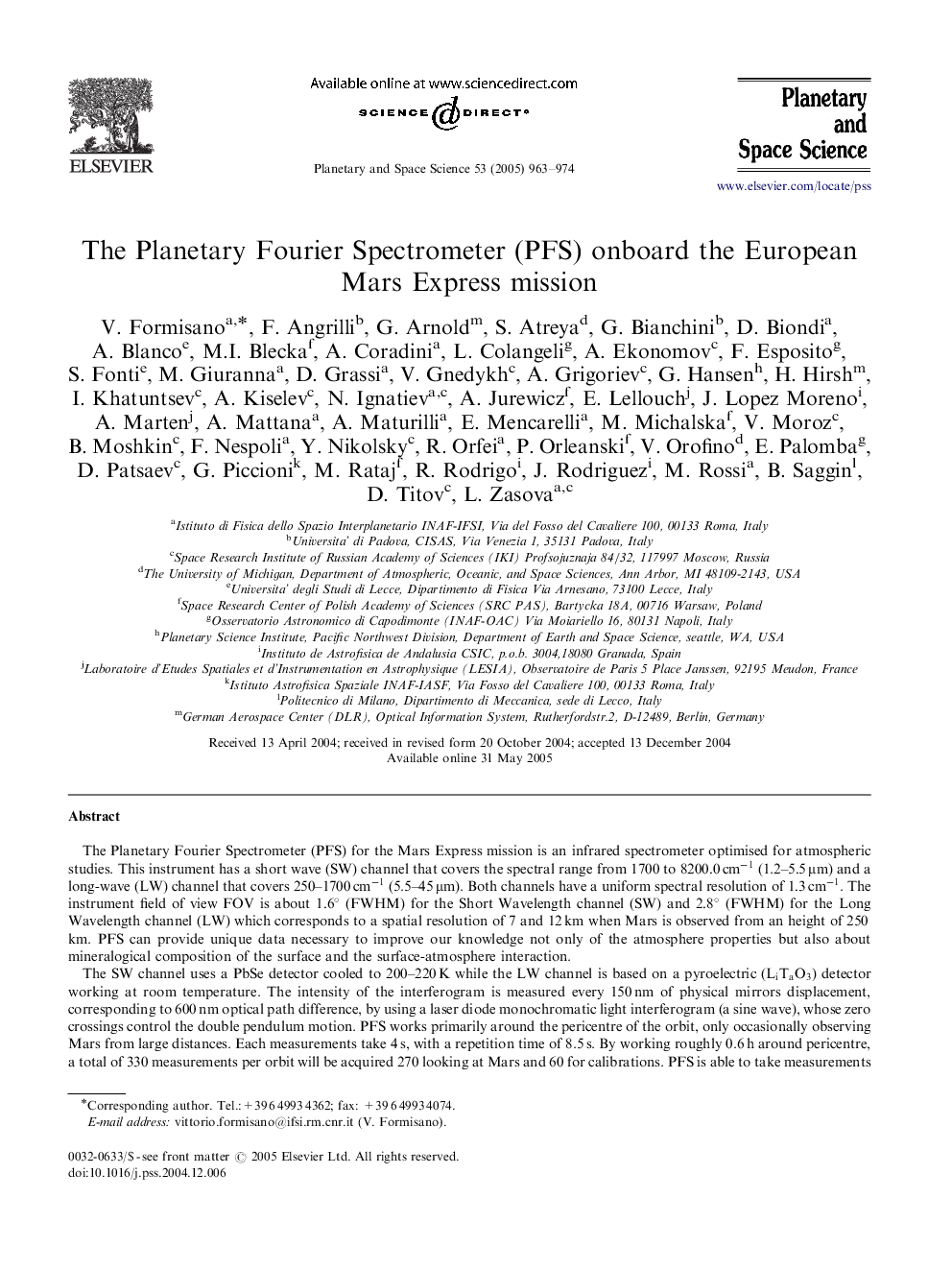| Article ID | Journal | Published Year | Pages | File Type |
|---|---|---|---|---|
| 10705417 | Planetary and Space Science | 2005 | 12 Pages |
Abstract
The SW channel uses a PbSe detector cooled to 200-220Â K while the LW channel is based on a pyroelectric (LiTaO3) detector working at room temperature. The intensity of the interferogram is measured every 150Â nm of physical mirrors displacement, corresponding to 600Â nm optical path difference, by using a laser diode monochromatic light interferogram (a sine wave), whose zero crossings control the double pendulum motion. PFS works primarily around the pericentre of the orbit, only occasionally observing Mars from large distances. Each measurements take 4Â s, with a repetition time of 8.5Â s. By working roughly 0.6Â h around pericentre, a total of 330 measurements per orbit will be acquired 270 looking at Mars and 60 for calibrations. PFS is able to take measurements at all local times, facilitating the retrieval of surface temperatures and atmospheric vertical temperature profiles on both the day and the night side.
Related Topics
Physical Sciences and Engineering
Earth and Planetary Sciences
Geophysics
Authors
V. Formisano, F. Angrilli, G. Arnold, S. Atreya, G. Bianchini, D. Biondi, A. Blanco, M.I. Blecka, A. Coradini, L. Colangeli, A. Ekonomov, F. Esposito, S. Fonti, M. Giuranna, D. Grassi, V. Gnedykh, A. Grigoriev, G. Hansen, L. Zasova,
